It’s hard to find a more ubiquitous genre in anime than Shounen. Maybe romance/moe-blobs, but it’s a close race. With series like One Piece and until recently Naruto, being a constant presence each season/year. Often this makes it difficult for newer series to break into the anime market in a meaningful way. With the recent success stories of that being My Hero Academia and Black Clover. However, with this season, I think Demon Slayer: Kimetsu no Yaiba can stand toe to toe with its contemporaries and stand proud. As the series, written by Koyoharu Gotouge and adapted by Ufotable, has broken into the scene en force. Even managing to break into the mainstream on social media like Twitter with some episodes, really showing how far anime can reach today. So the question then becomes, what does Kimetsu no Yaiba do right? What does it do wrong?
Without further ado, let’s dive right in and see if we can’t answer those questions.
(Disclaimer: I am working to make 50 the new “average”. 70 is not an average score people. 70 is above average. Also this review contains minor spoilers. Carry on.)
Animation/Art
Of course, the first thing you have to mention when talking about anime is the art and animation in question. Starting off, Kimetsu no Yaiba has style. I have always enjoyed thicker or inconsistent line work in a series. Most anime just come off feeling to impersonal and this helps alleviate that somewhat. Combine that with Ufotable’s generally excellent effects/lighting work and its a recipe for some beautiful still shots. Some might complain about lighting gradients and such, and yes occasionally these are a problem. You need only look at the recent One Punch Man S2 for an example of this going wrong. However I feel that Yuuichi Terao, the Director of Photography, generally has a handle on this sort of thing. I dare say that after holding the position on Fate/Zero, Fate/UBW and the entire Kara no Kyoukai series among others, he knows what he’s doing.
Moving on to animation itself, this really needs to be split into two parts. Those being the traditional 2D and the myriad of CGI in the series. Starting with the first, Kimetsu no Yaiba is pretty tame for the most part. Shifting to a much simpler style for all of its comedic bits and keeping movement to a minimum outside combat. Some rotoscoping excluded. Inside combat however, is where Kimetsu no Yaiba shines. With the legendary talents of Masayuki Kunihiro and Go Kimura for animation and Nozomu Abe for special effects really stretching their muscles on this series. When it wants to, Kimetsu no Yaiba looks nothing short of stunning. The issue though arizes outside of these highpoints. As the series suffers from reused animation, some simple or confusing storyboards and perhaps a touch of to much ambition in some parts. Oh, also the CGI.
The CGI is probably the biggest bugbear I and others have with the series. When it comes to environments, I think Kimetsu no Yaiba does a fine job. Creating some very interesting combat arena’s, backdrops or first person camera motions. Yes, the textures are visible and when compared to the previously mentioned 2D it becomes obvious. For the most part though, it works. When it comes to the characters however… There’s no missing it, as our leads walk across a fantastically rendered background, waddling their CGI butts across the screen. Occasionally it works fine, when other elements help mask it. Try as they might, Ufotable just couldn’t nail everything, and it’s a damn shame. When it’s all said and done though, personally I don’t think it will bother you all that much. These scenes are generally far between and the action set pieces carry most of the series weight.
Direction
Next up, let’s talk about how Kimetsu no Yaiba actually uses this animation and art. Here Haruo Sotozaki is a man of extremes. Resulting in either very beautiful frames, or incredibly simple ones. Most of this only really coming out during the battles. How much of this we can credit to his storyboard and how much to the animators own creativity, I do not know. But I will give him the benefit of the doubt. As in many combat scenes, Sotozaki tries to make the best of his CGI environments. Twisting the camera and following our lead as he flips around the screen in one continuous shot. A 2D character in a 3D rotating environment. It’s really ambitious I feel, and while it doesn’t always work, its something I can appreciate the attempt of.
Meanwhile, outside of combat, Kimetsu no Yaiba is pretty basic. Mostly consisting of character shots and flipping from face to face while people are talking. Occasionally we will get some interesting angles outside combat. Such as the memed to death “Dio walk“, or some nice rotating or skybox shots to help establish a scene/environment. For the most part though, it’s just simple and solid. Framing a character against the moon, or other such imagery. Personally, I prefer this more simplistic approach to going hog wild like say… Studio Shaft. As what is important is you get the information across first, and get fancy with it second. It’s one of my major complaints with Shaft, their often style over substance approach. So while Kimetsu no Yaiba’s direction won’t win any awards, I think it serves its purpose solidly.
Story/World
Finally onto the actual narrative of the story, starting with the story/world. Kimetsu no Yaiba sort of takes the easy way out here, setting itself in the Meiji era of Japan. A setting most anime fans have seen at least once, right at the cusp of the industrial revolution for the country. It’s not a bad setting, one of my favorite classics Rurouni Kenshin takes place in the era. And it’s not like Kimetsu no Yaiba doesn’t do its own establishing through many shots. Such as the night life of Asakusa near Tokyo, the rural mountains or the Demon Slayers own headquarters. However it never really explores this environment, not even bringing up or addressing the sword ban until the final episode. Instead focusing entirely on the demon’s and its characters. Not a poor choice, but definitely one with consequences, as I wish we had gotten more.
For the story itself, if the upcoming movie wasn’t enough of an indiciation, this isn’t the full story. Instead being more of an opening to the entire series as Tanjiro gets established inside the Demon Slayers order and sets up the greater goal. With each individual arc focusing on a new antagonist each time, with undertones of the greater conflict slowly getting established. This is something I actually think Kimetsu no Yaiba does well, as while we don’t see direct conflict with the lead antagonist Muzan, he is introduced early. Letting each of the later arcs build on that established character through said arc’s antagonist. It’s actually rather novel for a Shounen. As many completely forgo the overarching antagonist, instead focusing entirely on each individual arcs antagonist. That or when they attempt it, the arc villain’s don’t connect properly to the greater conflict. So well done there.
Characters
As far as characters go, I think Kimetsu no Yaiba has a few standouts among an otherwise average cast. With a few notable negatives. Among our heroes, the positives include Tanjiro and Inosuke. The first actually has a rather mature view towards combat and the story in question. Understanding that demons need to die for killing innocents, instead of the normal MC attitude of “saving” everyone. Yet he doesn’t let that stop him from empathizing with them, as the moment he is unable to do that, his sister stops being human herself. Outside combat he is still a little naive at times, with classic Shounen MC traits, but he is largely a positive. Meanwhile Inosuke is a veritable walking dating sim, who I think portrays his upbringing fantastically. Like most characters, he is tuned up a bit at the start. But he quickly tones it down and establishes himself.
Among the villains, I can’t not mention Kibutsuji Muzan, voiced by the brilliant Toshihiko Seki. This man makes Demon Michael Jackson irresistible, I just love his voice. Capable of going from calm and composed, to terrifying in a moment while keeping the base character. Enough about that though, we have to talk about his actual character. For only really being around for maybe 20 minutes total, Muzan gets more characterization than most. Establishing himself early, and then getting more and more built up through other characters backstories with him. Effectively building him based off of other people’s experiences, rather than the viewers own. Personally, I think Kimetsu no Yaiba does a good job here. Effectively creating a head honcho bad guy without coming up with a crazy reason for the MC to fight them and survive early on. Sidestepping the whole question of power. Sadly, not everything is sunny here.
There are some negatives as far as characters go, one being specific, the other being how the series introduces them. For the former, Kimetsu no Yaiba has a tendency to introduce all of its characters turned up to 11. Blasting the basest aspects of their personality at full volume from the start. There were a number of times this immediately put me off a character. As however effective it is at establishing who they are, it is terribly annoying. For the most part, as we spend time with these characters, this gets toned down and leads to some good ones like Inosuke. For Zenitsu however… I just couldn’t get into him. His whining and womanizing is like a completely separate character from the somber and self-deprecating kid who doesn’t want to fight demons. One is an interesting internal character study. The other is just annoying, regardless of the impressive VA.
Music/OST
Last but not least, let’s talk about the music. Jointly produced by Go Shiina and Yuki Kajiura, it’s pretty damn good. I would link a few songs in particular here, but each one would spoil or ruin the surprise of some standout moments in the series. So instead just take my word for it when I say that it’s good. There are of course plenty of insert songs that define a scene, not really overpowering but elevating even when they dominate the sounds effects of what’s happening. But some of the real stars to my ears are actually some of the few composed by Yuki Kajiura. As though Go Shiina does most of the work I believe, Kajiura is back in form for Kimetsu no Yaiba. With her haunting vocals such as in “To Destroy The Evil” or her combination of strings and flutes in “Survive And Get The Blade“.
Meanwhile Go Shiina provides the bulk of the OST for the series I believe. Composing a majority of the background music for the show. While most of this isn’t particularly noteworthy, mostly just setting scenes, I think it still does its job amiably. Not every song in an anime OST needs to be an insert song or a set piece. The role of the OST isn’t to dominate a scene but rather to amplify it. Meanwhile a bad OST is one that takes away from the scene in question. For Kimetsu no Yaiba, I never had that experience. Sure I can only really recognize a handful of tracks, but the rest of the time? It fit right in. So between this serviceable establishing music and the standout insert songs by the two composters, Kimetsu no Yaiba’s OST at the very least earns a good listen from any fan.
Conclusion
So, all in all, how was Kimetsu no Yaiba? If I had to choose a word to sum it up, it would have to be “competent”, or maybe “enjoyable”. I certainly didn’t have a bad time with the series. I don’t think there is a single portion that underperformed. As even at their worst the characters had their moments, and the story quickly moved past the few mistakes it made. No, if anything what holds the series back is how… safe it feels. The Kimetsu no Yaiba competently executes a standard Shounen story, but it doesn’t really take any risks. I fear that without Ufotable’s beautiful adaptation, this story is one I would otherwise pass over. As the animation and music is usually what sells the scenes, not the story itself. Hopefully now that everything is established Kimetsu no Yaiba can get a bit more adventurous.
Because as critical as I am, and while it doesn’t crack into the greats, this is a solid series, competently executed with some fantastic production. And that’s more than we usually get in this day and age.

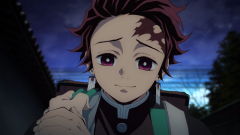
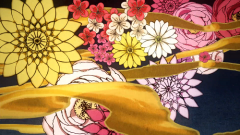
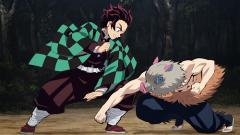
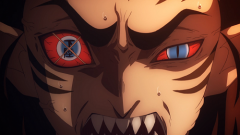
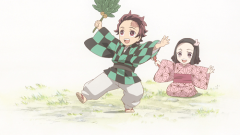






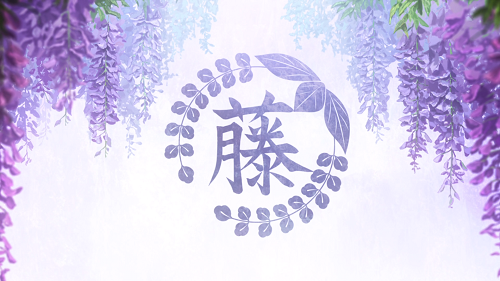
Good review. I think if they toned down Zenitsu a bit it would have helped. Probably the only thing I can fault. Everything else was really good to exceptional. I’d rate it slightly higher but thats only because I went ahead and read the manga and a lot of the stuff fits in well with whats coming.
Wrt the manga I won’t spoil anything for anybody but KnY really gets better and we still don’t get any sterotypical shonen nonsense. I’d rank it just below the likes of HxH or FMA but some things it even does do better.
Beautiful review! I completely agree about Zenitsu, I just can’t like him at all – even if he is really strong (supposedly). I am super drawn into the art style and animation, didn’t even notice the CGI rendering of the background (good catch!). For me, the reason I really like this series is that I find myself always wanting MORE. The episodes just fly by, I can’t say I feel the same for other series like Dr. Stone.
I really like Tanjiro and I think he makes the series worth watching. The villains have interesting back stories and yes, I feel the story telling is on the ‘safe’ side. From what I heard, it quickly deviates from this ‘safe’ zone once the train story begins.
I love that you take a holistic point of view when reviewing an anime like taking into consideration the animation style, art direction, music, etc. Most people just review anime based off of entertainment or story plotline. I think that anime definitely has more to it and it’s refreshing to see someone take the time to admire the artwork for everything that it is =)
I’m glad you liked it. The few comments we get really keeps us goin, and a lot of effort goes into these. Thanks for reading, all of you!